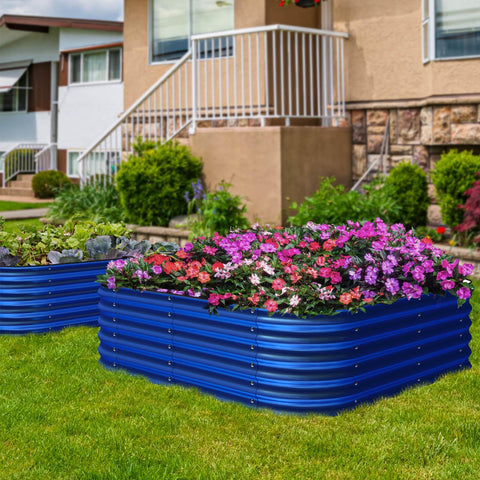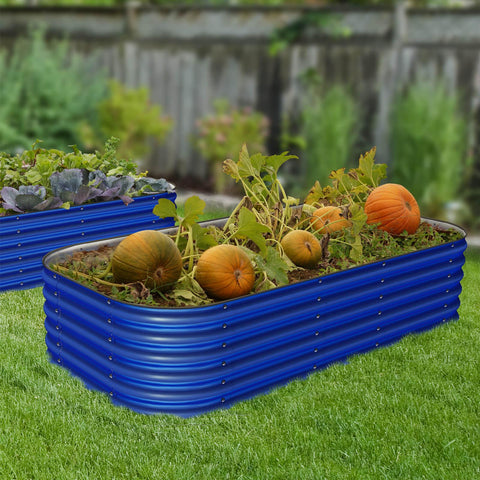Knowledge from Olle Garden Bed: The Remarkable Benefits of Using Aluminum Foil as a Covering Material
Gardening is a complex and delightful art, and many gardening enthusiasts continuously explore new methods to enhance plant growth and health. In recent years, aluminum foil has been widely utilized as a covering material in gardening practices. It offers numerous significant benefits that can thoroughly transform your gardening approach. This article will delve into the advantages of aluminum foil in gardening and discuss its positive impact on plant growth. The following content also has some reference value for raised garden beds.

Part 1: Thermal Effects
One primary advantage of using aluminum foil as a covering material is its thermal effect. Aluminum foil is capable of reflecting sunlight and bouncing back heat towards the plants. This reflective effect helps to elevate the temperature of the soil and plants, particularly during colder seasons or in colder regions. By maintaining a warm environment, aluminum foil aids in accelerating seed germination and plant growth. Furthermore, warm soil contributes to an increased breakdown rate of organic matter, thereby augmenting the nutrient supply for plants.
Part 2: Light Reflection
Another remarkable benefit of aluminum foil is its light reflection effect. By covering plants with aluminum foil, scattered sunlight can be redirected back to the leaves. This reflection enhances the efficiency of photosynthesis in plant foliage, facilitating the conversion of more energy into the essential nutrients required for plant growth. Additionally, light reflection aids in reducing excessive transpiration, enabling plants to utilize water more efficiently.
Part 3: Controlling the Spread of Strawberries and Other Crawling Plants
Aluminum foil can also be employed to control the spread of certain crawling plants, such as strawberries. The stems and branches of these plants typically come into contact with the soil surface, signaling them to root. By covering the soil surface with aluminum foil, this contact between the stems/branches and soil can be obstructed, preventing further proliferation. This proves to be a practical solution for gardening enthusiasts seeking to control the spread range of plants.
Part 4: Protecting Plants from Pests and Pathogens
Aluminum foil serves as a protective barrier, safeguarding plants from pests and pathogens to some extent. The light reflection and thermal effects of aluminum foil not only benefit the plants but also deter certain pests and pathogens. For instance, certain insects find the light reflection from aluminum foil discomforting, reducing their activity around the plants. Moreover, the foil covering can prevent the airborne transmission or contact spread of pathogens to plants.
Part 5: Water Resource Conservation
In arid regions or environments with limited water resources, aluminum foil can aid in water conservation. By covering with aluminum foil, the rate of soil surface water evaporation can be reduced. This covering layer effectively preserves soil moisture, diminishing the need for irrigation water. Additionally, the foil helps block wind flow, reducing the rate of water evaporation and providing a more humid environment.
Aluminum foil, as a covering material, offers remarkable benefits in gardening. Its thermal and light reflection effects improve soil and plant temperatures as well as enhance photosynthesis efficiency, promoting better growth and development. Furthermore, it controls the spread of crawling plants, protects plants from pests and pathogens, and conserves water resources. By incorporating aluminum foil into your gardening practices, you can completely transform your approach and achieve improved plant growth and bountiful harvests.

However, it is essential to note that the use of aluminum foil may also have limitations and potential side effects. Excessive heat reflection may lead to plant overheating, and excessive light reflection may damage plant foliage. Therefore, when using aluminum foil as a covering material, proper monitoring and adjustments should be implemented to ensure optimal plant growth conditions.
In conclusion, the application of aluminum foil in gardening provides numerous remarkable benefits, enabling us to improve plant growth conditions, enhance growth efficiency, and protect plants from various threats. By understanding both the advantagesand limitations of aluminum foil, gardeners can harness its potential in gardening practices, creating a more favorable environment for plant growth and development.
